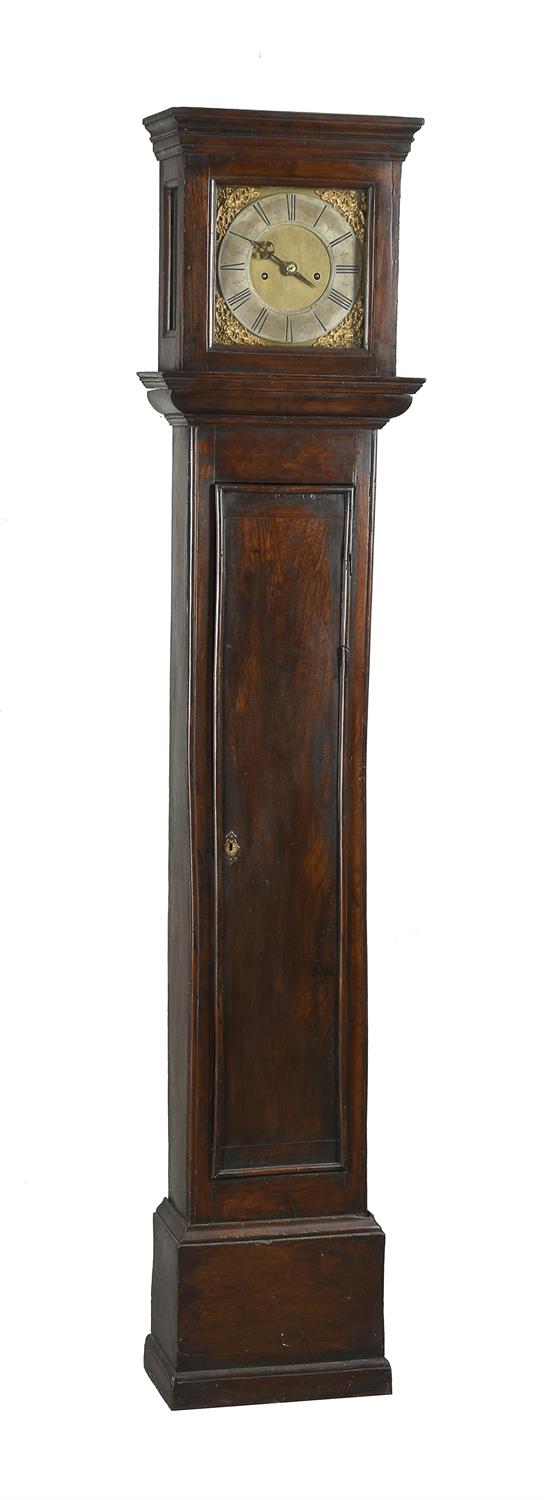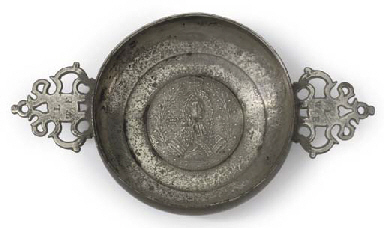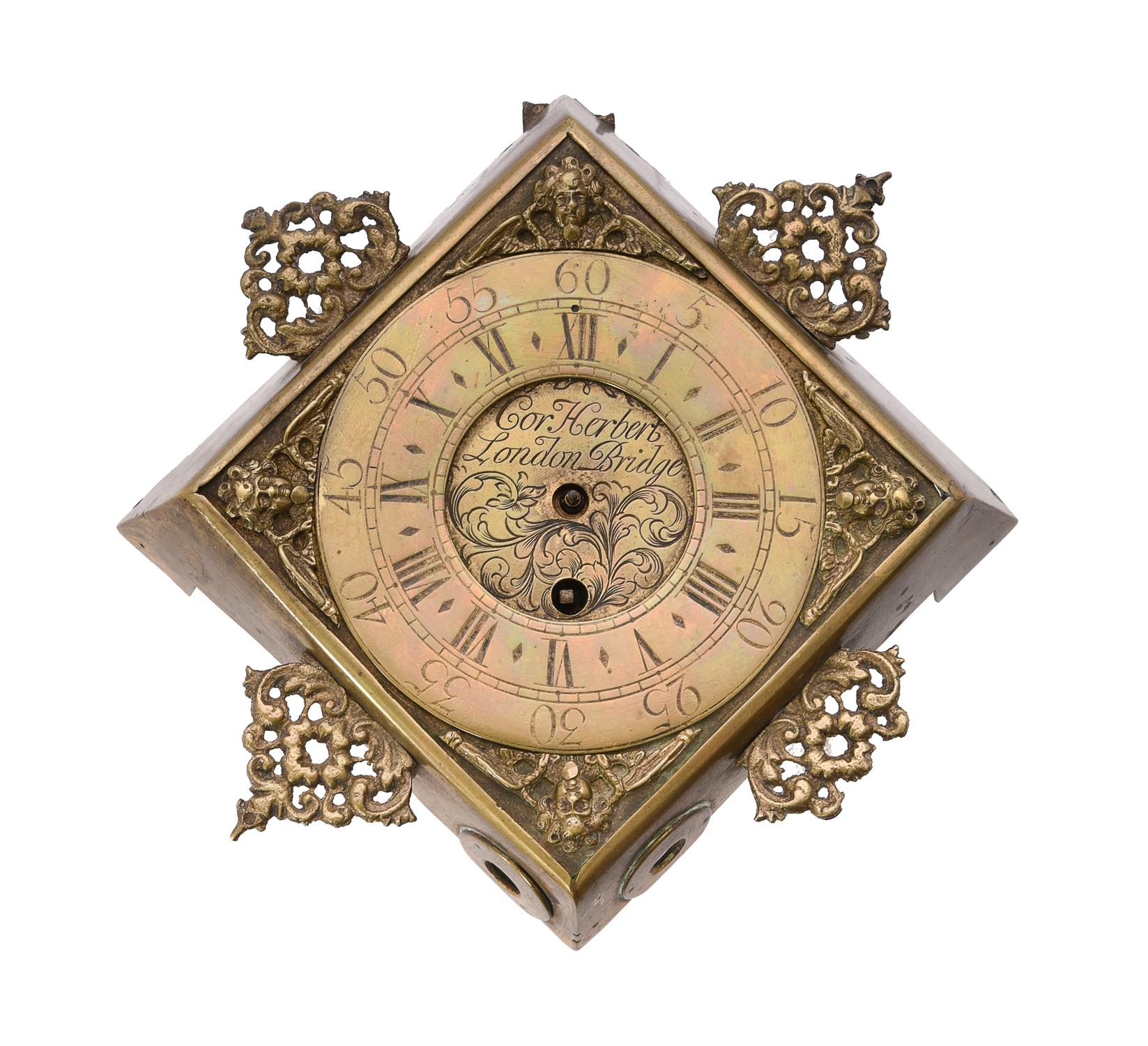Ω A rare William IV or early Victorian mahogany and brass mercury portable mountain stick barometer John Newman London, circa 1835 The slender circular section mahogany case incorporating slot applied with canted silvered brass Vernier scale calibrated in barometric inches from 18 inches to over 32 inches divided into twentieths and annotated 19-32 to right hand margin set behind brass revolving cylindrical shutter and with Vernier adjustment screw to cap, the waist applied with ivory collar engraved NEWMANS IMPROVED PORTABLE IRON CISTERN, 122 REGENT STREET, LONDON opposing annotations CORRECTION FOR CAPACITIES 1/50, NEUTRAL POINT 30.012, CAPILLARY ACTION +.038, TEMPERATURE 66 (degrees), the slightly tapered lower section with inset Fahrenheit mercury thermometer applied to ivory scale over two-part brass cased iron cistern, the lower part turning against a pinned slot engraved with two positions PORTABLE and NOT PORTABLE, 91.5cm (36ins) high; with original leather cylindrical carrying case. Provenance: Private collection, Hampshire (ref. B26). John Frederick Newman‚ is recorded in Banfield, Edwin BAROMETER MAKERS AND RETAILERS as working at 7 and 8 Lisle Street, London, 1816-25 then 122 Regent Street 1827-62 when the business was taken over by Negretti and Zambra. He made standard and portable barometers for James Clark Ross's Antarctic expeditions (1839-1843). In 1851 he exhibited at the Great Exhibition at the Crystal Palace and his meterological station barometers were used throughout the British Empire. Soon after the invention of the barometer in the 17th century it was observed that air pressure decreased with altitude. However, it was not until the latter part of the 18th century before an accurate mathematical relationship between height and drop in air pressure had been devised allowing barometers to be made with the intention of measuring altitude. The two-part iron cistern employed in the current lot was devised by Newman in 1833 to allow safe transport of the instrument. The construction of the cistern incorporates a valve mechanism which essentially ‘shuts off’ the mercury column from the atmosphere when the lower half of the cylinder is rotated to the PORTABLE position. Newman’s instructions for the use of the barometer advises that the instrument should be inverted before the cistern is closed-off presumably to prevent the mercury column from ‘bouncing’ against the top of the column (potentially breaking the glass) and transported upside-down. Indeed the leather case present with the lot is designed for the instrument to be inverted before insertion. An almost identical instrument to the current lot was purchased by Charles Darwin in 1831 for use on the Beagle voyage (1831-36) and was presented to the Royal Society by the executors of his estate after his death in 1882. Cites Regulations Please note that this lot (lots marked with the symbol Ω in the printed catalogue) may be subject to CITES regulations when exported from the EU. The CITES regulations may be found at www.defra.gov.uk/ahvla-en/imports-exports/cites
Ω A rare William IV or early Victorian mahogany and brass mercury portable mountain stick barometer John Newman London, circa 1835 The slender circular section mahogany case incorporating slot applied with canted silvered brass Vernier scale calibrated in barometric inches from 18 inches to over 32 inches divided into twentieths and annotated 19-32 to right hand margin set behind brass revolving cylindrical shutter and with Vernier adjustment screw to cap, the waist applied with ivory collar engraved NEWMANS IMPROVED PORTABLE IRON CISTERN, 122 REGENT STREET, LONDON opposing annotations CORRECTION FOR CAPACITIES 1/50, NEUTRAL POINT 30.012, CAPILLARY ACTION +.038, TEMPERATURE 66 (degrees), the slightly tapered lower section with inset Fahrenheit mercury thermometer applied to ivory scale over two-part brass cased iron cistern, the lower part turning against a pinned slot engraved with two positions PORTABLE and NOT PORTABLE, 91.5cm (36ins) high; with original leather cylindrical carrying case. Provenance: Private collection, Hampshire (ref. B26). John Frederick Newman‚ is recorded in Banfield, Edwin BAROMETER MAKERS AND RETAILERS as working at 7 and 8 Lisle Street, London, 1816-25 then 122 Regent Street 1827-62 when the business was taken over by Negretti and Zambra. He made standard and portable barometers for James Clark Ross's Antarctic expeditions (1839-1843). In 1851 he exhibited at the Great Exhibition at the Crystal Palace and his meterological station barometers were used throughout the British Empire. Soon after the invention of the barometer in the 17th century it was observed that air pressure decreased with altitude. However, it was not until the latter part of the 18th century before an accurate mathematical relationship between height and drop in air pressure had been devised allowing barometers to be made with the intention of measuring altitude. The two-part iron cistern employed in the current lot was devised by Newman in 1833 to allow safe transport of the instrument. The construction of the cistern incorporates a valve mechanism which essentially ‘shuts off’ the mercury column from the atmosphere when the lower half of the cylinder is rotated to the PORTABLE position. Newman’s instructions for the use of the barometer advises that the instrument should be inverted before the cistern is closed-off presumably to prevent the mercury column from ‘bouncing’ against the top of the column (potentially breaking the glass) and transported upside-down. Indeed the leather case present with the lot is designed for the instrument to be inverted before insertion. An almost identical instrument to the current lot was purchased by Charles Darwin in 1831 for use on the Beagle voyage (1831-36) and was presented to the Royal Society by the executors of his estate after his death in 1882. Cites Regulations Please note that this lot (lots marked with the symbol Ω in the printed catalogue) may be subject to CITES regulations when exported from the EU. The CITES regulations may be found at www.defra.gov.uk/ahvla-en/imports-exports/cites















Testen Sie LotSearch und seine Premium-Features 7 Tage - ohne Kosten!
Lassen Sie sich automatisch über neue Objekte in kommenden Auktionen benachrichtigen.
Suchauftrag anlegen